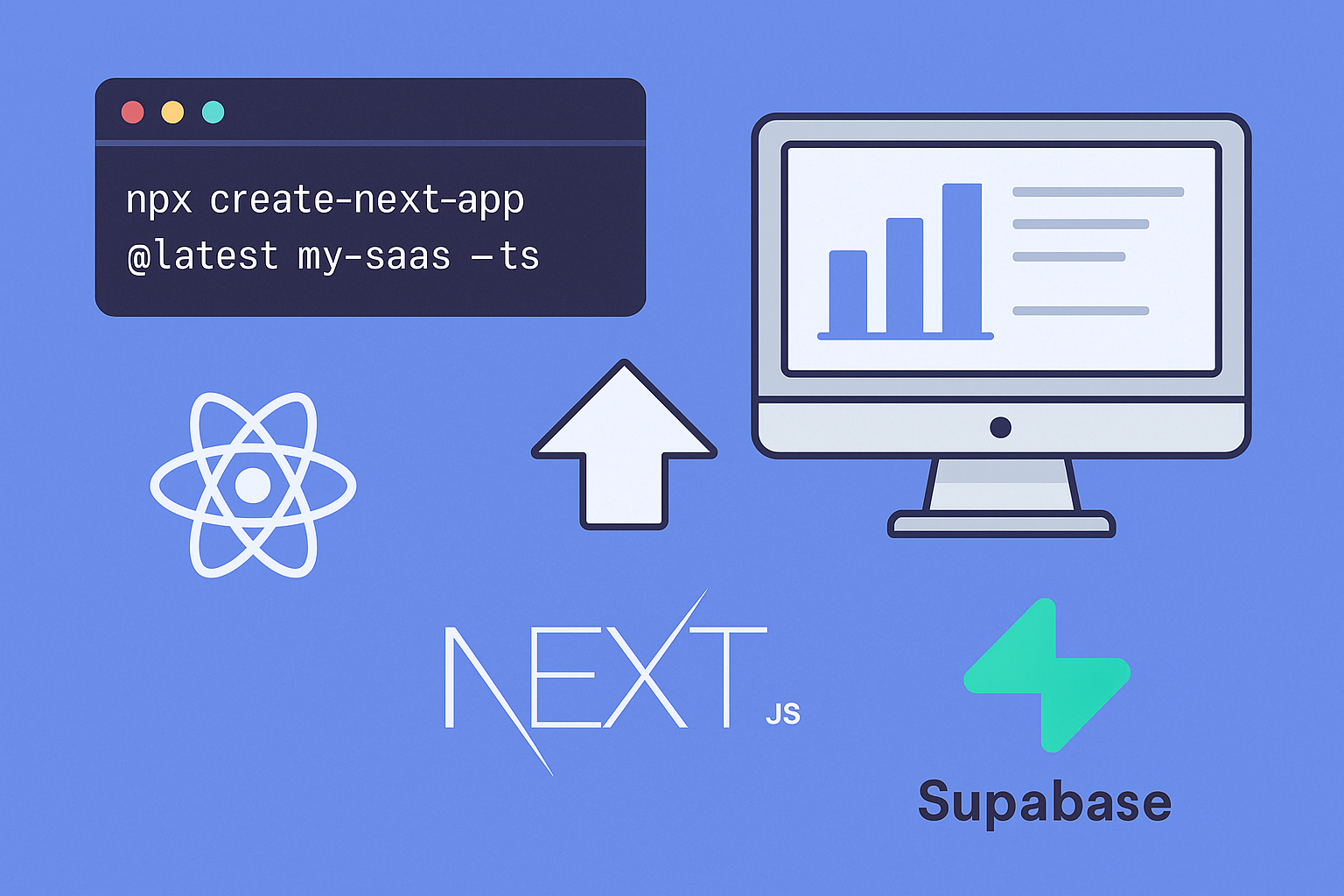
So you’ve got an idea. Maybe it’s the next AI-powered dashboard, a real estate platform, or a productivity tool for remote teams. You open VS Code… and then what?
If you're like me a few years ago, you overthink:
→ Which stack?
→ Backend? Frontend? Auth?
→ Should I buy a template?
→ Is this even worth building?
Been there. That’s why over time, I refined a simple, scalable process to build SaaS MVPs lightning fast using React, Next.js, Supabase, and a bit of AI magic. Here's how I do it — code included.
Why This Stack? (Quick & Brutal Honesty)
After shipping dozens of projects, this is my go-to setup:
✅ React — battle-tested, huge ecosystem
✅ Next.js — routing, SSR, API routes, no headache
✅ Supabase — real-time Postgres, auth, storage, basically Firebase but SQL-friendly
✅ Tailwind CSS — fast, clean UI without wasting time
✅ OpenAI API — if I need AI in minutes, not months
Bonus: I can deploy the whole thing on Vercel in 5 minutes.
Step 1: Project Kickoff — Don’t Overthink, Just Init
Create your Next.js app:
npx create-next-app@latest my-saas --ts
cd my-saas
npm run devTailwind setup?
Just follow their quick install — no excuses.
Step 2: Supabase Setup — Your Backend in 10 Minutes
Head to supabase.com, create a new project.
Install Supabase client:
npm install @supabase/supabase-jsConnect in your app:
import { createClient } from '@supabase/supabase-js';
const supabase = createClient(
process.env.NEXT_PUBLIC_SUPABASE_URL!,
process.env.NEXT_PUBLIC_SUPABASE_ANON_KEY!
);Boom — you’ve got a database, auth, storage. No backend code yet? Don’t worry, it’s coming.
Step 3: Auth That Works (Finally)
Supabase makes this absurdly easy:
const { data, error } = await supabase.auth.signUp({
email: 'user@example.com',
password: 'securepassword'
});Magic link? Social login? All built-in. No Firebase spaghetti or OAuth headaches.
Step 4: Basic SaaS Structure
Here’s my mental model:
→ Landing Page
→ Auth flow (login/signup/reset)
→ Dashboard (protected)
→ Simple billing (Stripe or Lemon Squeezy later)
→ Database tables for core features
Start lean. Ugly UI is okay — shipping is the goal.
Step 5: Deploy & Iterate
Vercel deploy:
git init
git remote add origin <your_repo>
git push -u origin main
Connect to Vercel. Done.
Now your MVP is live. You’ll fix bugs, improve UI, stress about users — that’s normal.
Final Thoughts — Ship Fast, Learn Fast
I’ve built real SaaS products this way: AI tools, dashboards, client portals. Is it perfect? No. But it works. It gets you to:
✔️ A live product
✔️ Real user feedback
✔️ Confidence to scale
You can waste months planning the “perfect stack” or you can launch, learn, and improve. Your call.
Need help turning your SaaS idea into a real app?
That’s literally what I do — React, Next.js, Supabase, AI — fast, reliable, no nonsense.
Let's build something cool.